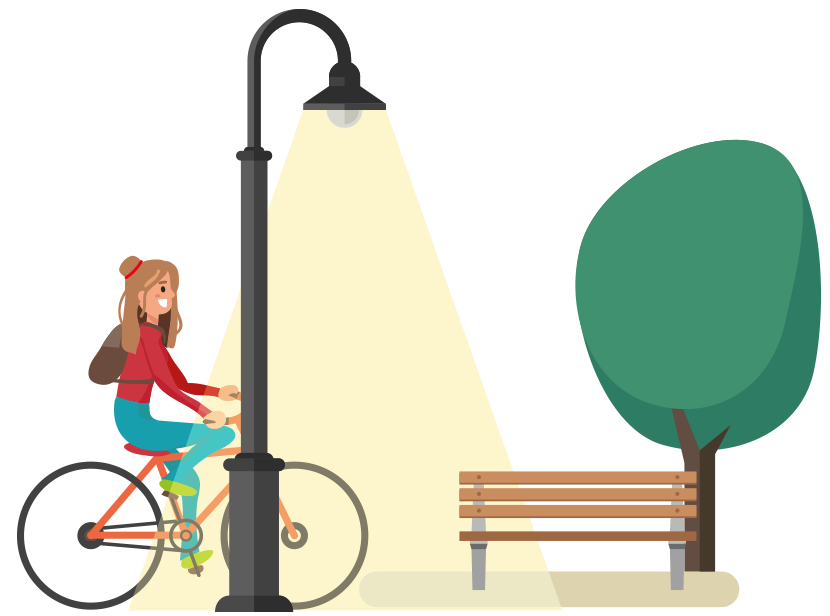

In the summer, Emma likes to sleep with the curtains open. With the early morning sunlight shining in on her, she already feels awake and ready for the day when her mom enters to wake her up for school.
But in the winter, when it’s still dark outside, Emma tends to curl up and stay in bed just a little longer. To help Emma wake up during these darker months of the year, the family installed lights in the bathroom that mimic the colour of daylight. These lights help give Emma the energy she needs to start the day.


Visible light is the most powerful external regulator of our circadian rhythms. In fact, daylight activates specific hormones that give us the energy to start the day. In the winter, when there is limited sunlight, we can use bright white electric lights to trigger our circadian rhythms.
Emma often rides her bicycle to school. Thanks to the streetlights that illuminate her route during the dark winter mornings, she can easily see any obstacles in the road and arrive safely at school.


Good street lighting helps reduce accidents, and white light increases our sense of safety.
During the winter time, Emma meets up with her friends before school. As they wait outside for the bell to ring, you can see many of them yawning. Luckily, once inside, the classroom’s bright white lighting gives the students energy and helps them concentrate. Thanks to this lighting, Emma has no problem following the explanations given by her maths teacher.
During the mid-morning break, Emma joins her classmates outside. As they chat with each other, the bright natural light synchronises their internal clocks with the day. This allows Emma and her friends to decrease stress and increase their energy. In fact, by the time they return to their next lesson, the teacher must turn the lights down and change to a warmer, white colour to help the students relax and prepare for a teamwork activity.


Compared to adults, a teenage girl’s internal clock is delayed by one hour, and a boy’s is delayed by up to two. That is why students during winter need extra amounts of blue light early in the morning at the school to wake them up and better synchronize their rhythms with the working day.
Emma and her friends enjoy lunch in the school cafeteria, where the warm light creates a calm and restful atmosphere.


Warm light helps humans to relax during the day, this is important to give the body the chance to recover and reenergize
Before she starts her homework, Emma turns on the bright white light that hangs above her family’s table. This gives her the motivation she needs to open the books and efficiently finish her assignments.


Bright white light also causes your pupils to become smaller, allowing you to see better.
After enjoying dinner with her family in the warmly lit kitchen, Emma returns to her room for some last chats with friends. Because it is the end of the day, her smartphone’s screen is dimmed and uses a warm white colour. Even when she is brushing her teeth and getting ready for bed, Emma does so under a warm, dimmed light.


As the sun sets and begins to produce a warmer, lower light, you should adjust your electric lights accordingly. It is recommended that you switch from white bright to warm lighting and stop viewing bright white computer screens about two hours before going to sleep. This shift in lighting will trigger the production of melatonin, a hormone that tells your body "it’s time to go to sleep".